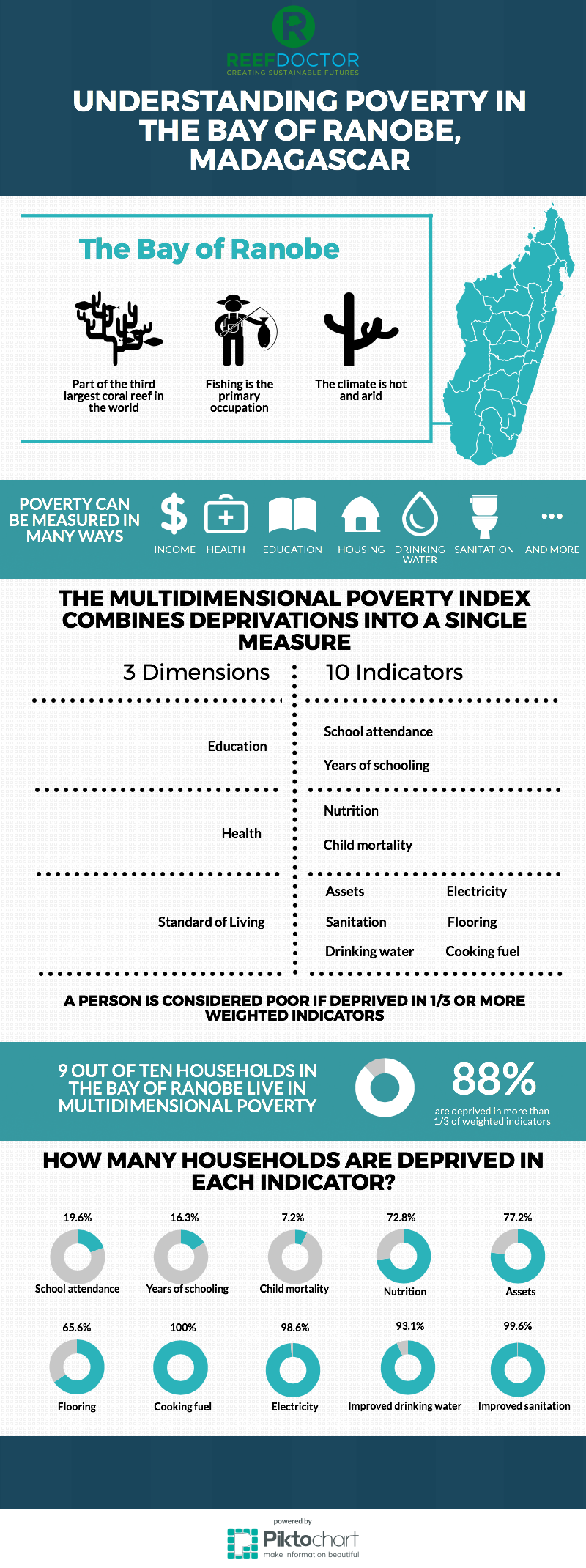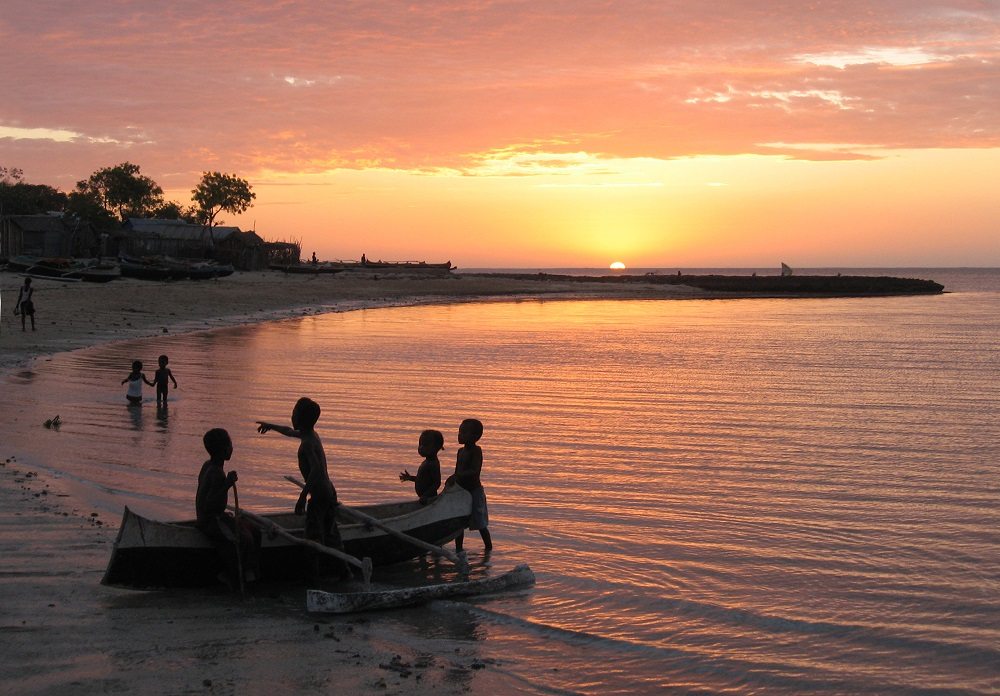Our work addresses ecosystem degradation, natural resource over-exploitation, and extreme poverty
![]() Coral reefs, seagrass beds, and mangroves are among the world’s most valuable ecosystems, yet they are also the most endangered.
Coral reefs, seagrass beds, and mangroves are among the world’s most valuable ecosystems, yet they are also the most endangered.
![]() Madagascan coral reef ecosystems are extremely rich and diverse. Of the 3,540 km of reef systems surrounding the island, the majority are found along the west coast, including one of the world’s largest barrier reefs, “Le Grand Recif de Toliara”.
Madagascan coral reef ecosystems are extremely rich and diverse. Of the 3,540 km of reef systems surrounding the island, the majority are found along the west coast, including one of the world’s largest barrier reefs, “Le Grand Recif de Toliara”.
![]() In the Bay of Ranobe, this reef system is the main source of livelihood for over 20,000 people that depend on fishing to provide for their families. However, habitat degradation, declining fishery yields and increased competition for marine resources is driving a pattern of over-exploitation and ecosystem collapse, compromising marine resource availability for artisanal fishermen.
In the Bay of Ranobe, this reef system is the main source of livelihood for over 20,000 people that depend on fishing to provide for their families. However, habitat degradation, declining fishery yields and increased competition for marine resources is driving a pattern of over-exploitation and ecosystem collapse, compromising marine resource availability for artisanal fishermen.
![]() Desperate fishermen with few alternatives are increasingly turning to destructive fishing methods, destroying corals and seagrass beds to extract the last remnants of marine productivity, while marine turtles, that use the bay as a habitual feeding ground, are actively hunted for their high market value.
Desperate fishermen with few alternatives are increasingly turning to destructive fishing methods, destroying corals and seagrass beds to extract the last remnants of marine productivity, while marine turtles, that use the bay as a habitual feeding ground, are actively hunted for their high market value.
![]() Terrestrial ecosystems in this region are similarly under threat. High rates of deforestation are resulting in the destruction of one of the most unique forests in the world.
Terrestrial ecosystems in this region are similarly under threat. High rates of deforestation are resulting in the destruction of one of the most unique forests in the world.
Coastal Habitat Degradation
Coastal habitats in the region are under serious threat from a variety of natural and anthropogenic stressors.
Coral reefs
Over the last few decades, cyclones, mass bleaching events, disease outbreaks, sedimentation (due to prolonged deforestation of Madagascar’s terrestrial forests and coastal mangroves), and fishing gear damage have led to significant coral mortality and widespread reef habitat degradation in shallow coastal waters. Sustained nutrient loading from topsoil erosion, agricultural practices, human effluent run-off, over-fishing of important herbivore species, and poor flushing of lagoonal water have shifted the competition for space in favour of macroalgae, at the expense of coral. Today, the vast majority of what were once healthy coral-dominated reef habitats just a few decades ago, are now covered in mass swathes of macroalgae, reducing reef habitat complexity, productivity, and biodiversity.
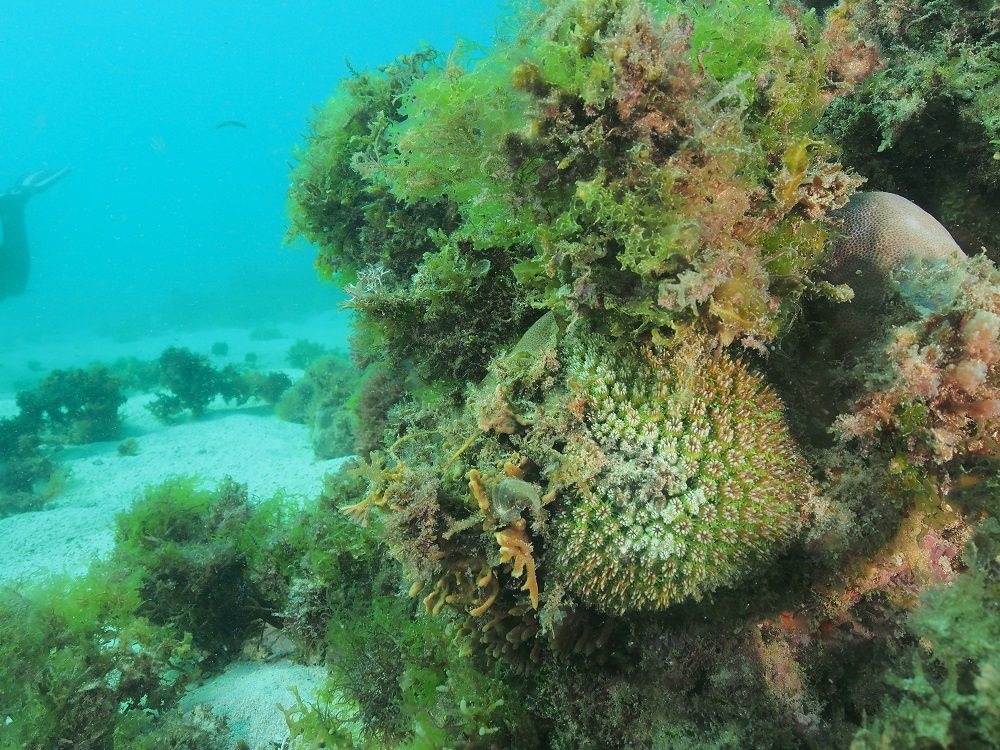
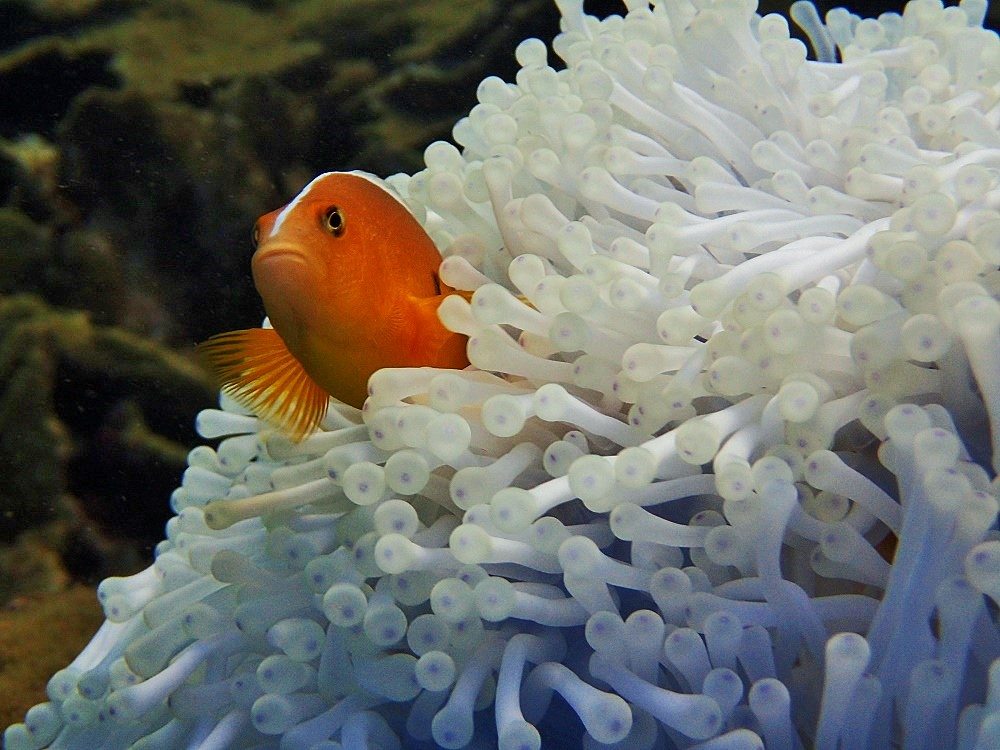
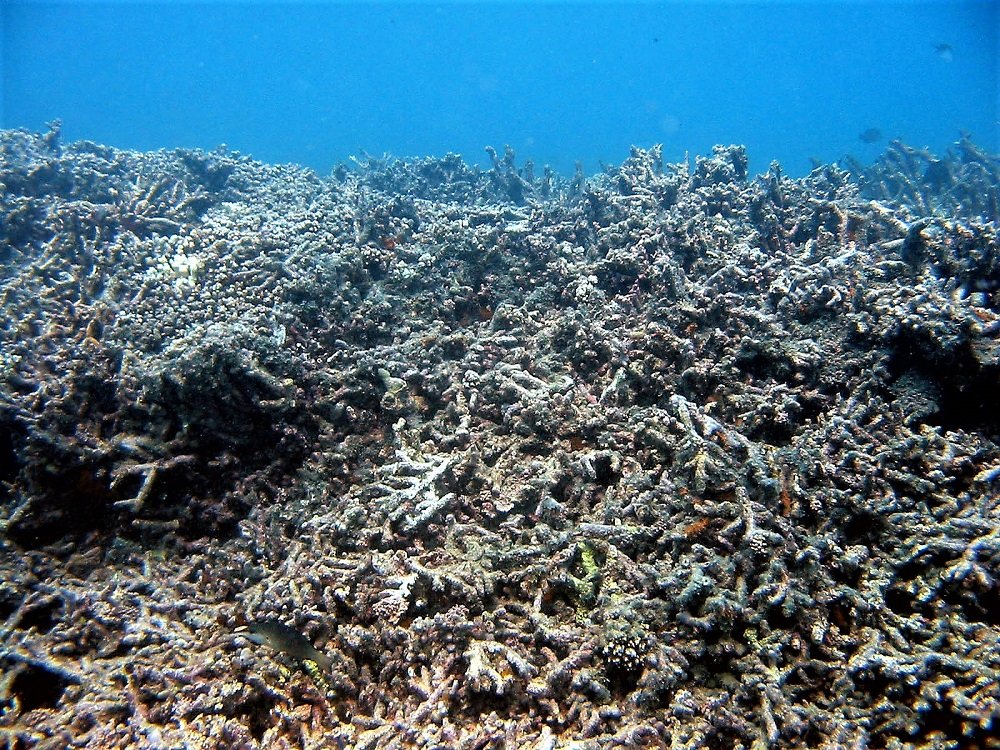
Seagrass beds
Degradation of these valuable habitats is occurring in areas near to coastal settlements resulting in the loss of overall seagrass cover in the intertidal zone. This has been mainly attributed to some of the fishing techniques utilised by the local fishing community, namely the use of beach seines (trawling nets) and reef gleaning (resulting in trampling at low tide), but these habitats are also subjected to other anthropogenic impacts including eutrophication, sedimentation, and climate change. Degradation of seagrass beds results in the loss of important feeding and nursery habitats for a variety of marine life including target fishery species and turtles.
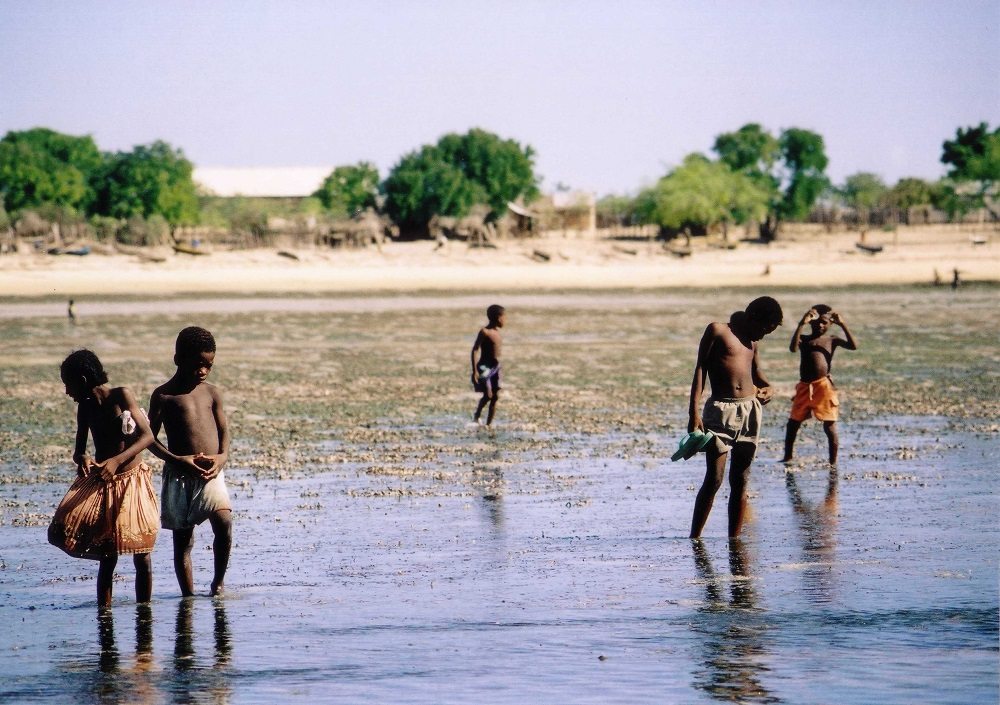
Mangroves
Local coastal communities strongly depend on mangroves for wood (for charcoal and building materials) and their associated biodiversity (such as shrimp and crabs). However, due to rapid population growth in this region, mangrove trees and their resources have been over-exploited and widespread habitat degradation is evident. The destruction of mangrove habitats in the region has serious ecological and social-economic consequences including the loss of an important nursery habitat for reef fish, and increased coastal erosion and sedimentation.

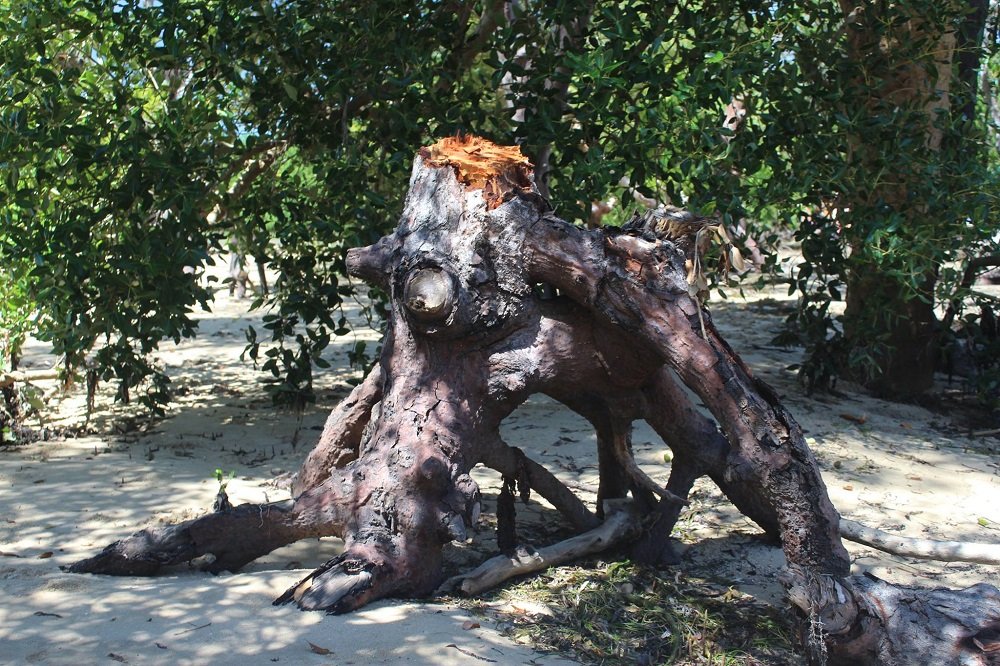
We monitor, manage, protect, and restore degraded coastal habitats in this region to conserve biodiversity and secure livelihoods.
Marine Resource Over-Exploitation
The Bay of Ranobe supports some of the highest fishing pressures in the entire region. Since agricultural practices have limited success in this region, the vast majority of the population seek existence from the sea. Over successive generations the fishing pressure has increased resulting in declining fish populations. Degraded marine habitats and concentrated fishing pressure mean that fewer and fewer people can make their living from the ocean. The competition for marine resources and extreme poverty in these communities leaves little incentive for sustainable management.
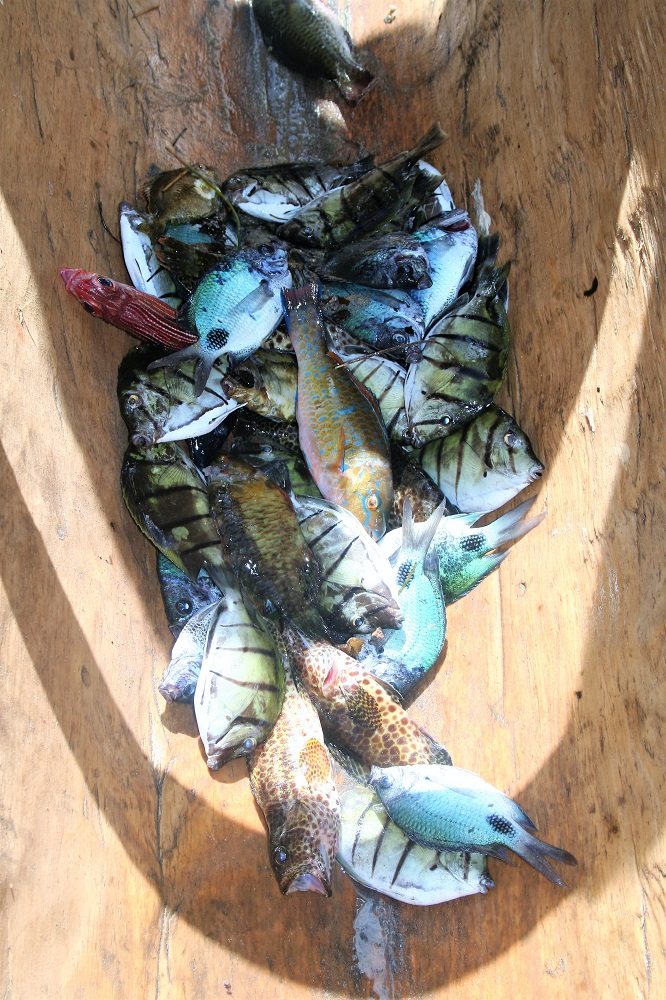
Current fisheries catches are now exceeding sustainable levels, pushing small-scale fisheries increasingly closer to the verge of collapse. Over-exploitation of fish stocks has resulted in an increase of fishing effort in order for communities to sustain a subsistence lifestyle. This has consequently exacerbated the problem, condemning many marine resources to exhaustion. Since over-exploited fisheries, once the lifeblood of these communities, can no longer provide an adequate income, fishermen are become desperate and increasingly hunting those species with a high market value, such as turtles.
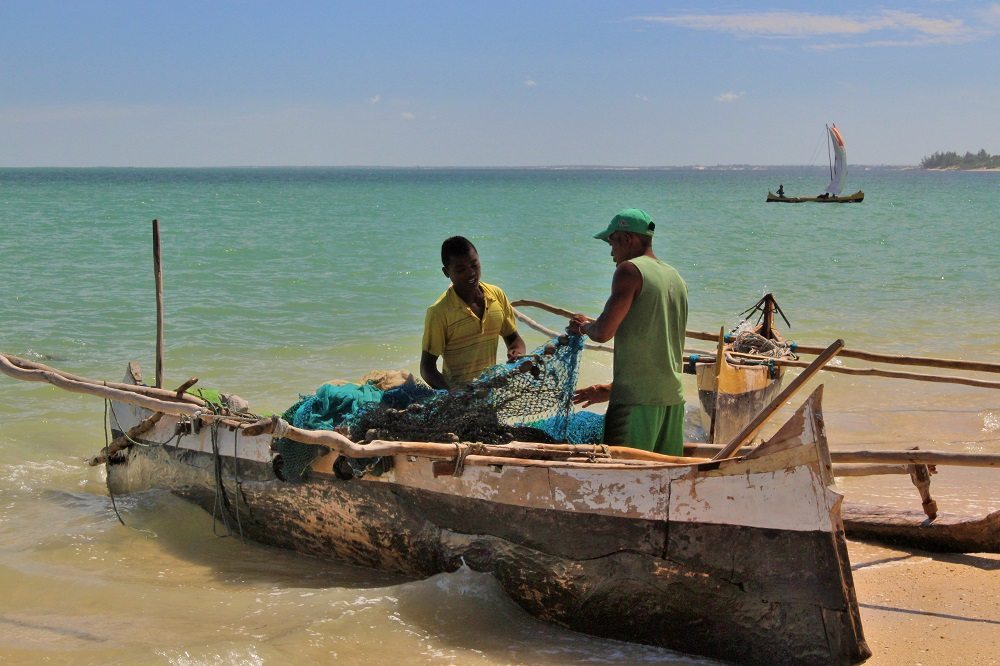
We support community-led sustainable marine management initiatives.
A Scramble for Marine Resources
Madagascar experiences an annual population growth rate of 2.8%, one of the highest in Africa. This has led to an increase of both native coastal Vezo populations and also inland populations in the region. The rapidly expanding population is increasing the pressure on the remaining marine resources and habitats, and making it more difficult for traditional Vezo fishing communities to eke out an existence dependent on the sea. Furthermore, poor agricultural practices (slash and burn) have resulted in larger areas of land being unusable for crops, resulting in an influx of many farmers from the surrounding areas to fishing villages in the bay. Lack of cultural cohesion between the different tribes in the bay complicates the implementation of effective fisheries management.
In rural coastal communities, large families act as an insurance policy against misfortune and tough times, and provide an effective workforce – a small fleet of fishermen providing for the family. It is not uncommon for families to have 8 or 9 children, and given the limited job opportunities and poor education level among communities, most of these children are destined to become fishermen.
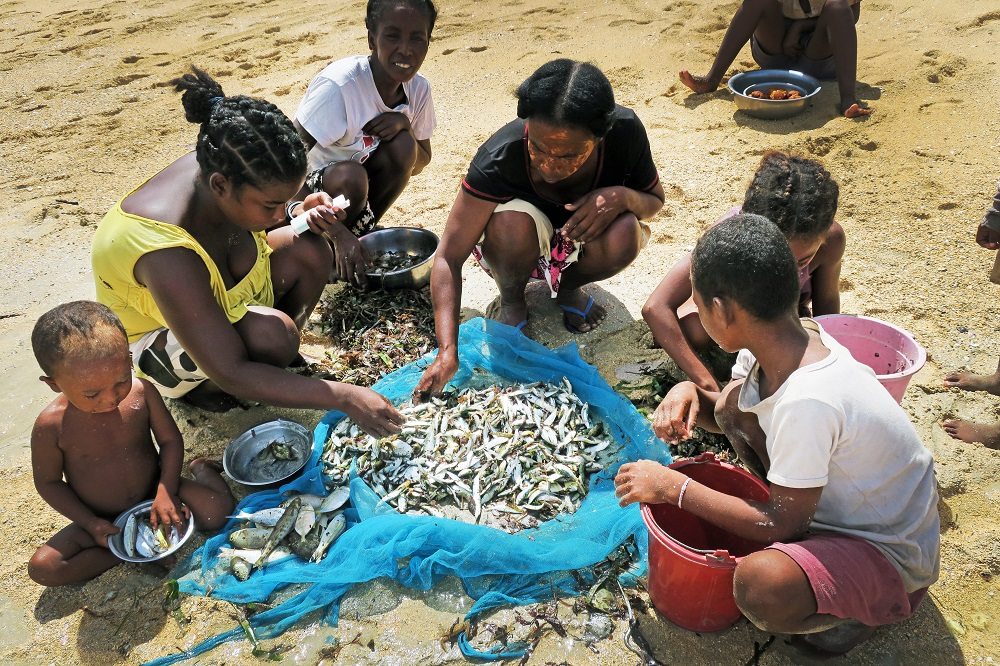
We are providing coastal communities with alternative sustainable marine based livelihoods to reduce pressure on natural resources.
Extreme Poverty & Food Insecurity
The semi-arid, drought-prone region of Toliara province in the Southwest is the poorest region in Madagascar. Extreme poverty is widespread, as harsh living conditions drive more-and-more people towards the coast to seek marine resources from an already over-exploited ecosystem with dwindling fish stocks. Extreme weather events and locust plagues are compromising crops resulting in food insecurity and rising costs. Subsistence fishing enables people in this region to get by on $0.7–1.4 USD per day, well below the World Health Organisation’s poverty line set at $2 USD. Since these coastal communities are almost entirely reliant on marine resources for subsistence and economic income, the continuous decline in fish stocks is pushing communities further below the poverty line. Poor infrastructure, healthcare and access to fresh water, low employment opportunities and diversification, gender inequality, and a lack of an adequate education system exasperates the socio-economic situation further and increases levels of desperation.
In 2015-2016, we conducted a poverty assessment survey in 7 villages (including almost 2,000 people from 276 households) across the Bay of Ranobe. We identified 88% of people as living in acute poverty. Over 90% of respondents lived without access to improved sanitation facilities, clean drinking water, or electricity, and over 40% of children under 5 years of age suffered from malnourished related stunting.
